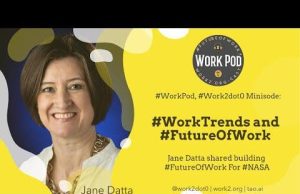In an era marked by rapid technological advancements and shifting workforce dynamics, organizations are increasingly turning to predictive analytics as a beacon to navigate the complex landscape of human resource management. As a contemporary HR professional, embracing data-driven methodologies isn’t just a strategic advantage—it’s an essential component of fostering a resilient and forward-thinking workplace culture.
Predictive analytics, the use of data, statistical algorithms, and machine learning techniques to identify the likelihood of future outcomes based on historical data, is revolutionizing the way HR leaders approach their duties. By systematically integrating predictive analytics into HR strategies, businesses can gain actionable insights, enabling them to make informed decisions that align with long-term objectives and mitigate potential risks.
Anticipating Employee Turnover with Precision
One of the most pressing concerns for any organization is retaining top talent. Predictive analytics empowers HR professionals to identify patterns and predictors of employee turnover. By analyzing variables such as job satisfaction levels, engagement metrics, and even social media behavior, predictive models can flag individuals at risk of departure, allowing HR teams to intervene with targeted retention strategies before it’s too late.
Bridging the Skills Gap Proactively
The future of work is inextricably linked to the continuous development of skills. Predictive analytics aids in forecasting the future skills required for the workforce to thrive. HR can leverage this information to design upskilling programs and adapt recruitment drives, ensuring that the organization does not fall behind in an ever-evolving competitive landscape.
Refining Talent Acquisition with Data-Driven Insights
Recruitment is no longer about filling vacancies; it’s about acquiring strategic assets. Predictive analytics enables HR departments to refine their talent acquisition strategies by identifying the traits and competences that correlate with high performance and long-term success in specific roles. This level of granularity not only improves the quality of hires but also enhances the overall efficiency of the recruitment process.
Case Studies of Success and Innovation
Practical examples abound of organizations that have harnessed the power of predictive analytics within HR. Company A, for instance, reduced its employee attrition rate by 20% after implementing a predictive model to identify flight risks and proactively address their concerns. Company B, on the other hand, utilized predictive analytics to diversify its talent pool, having identified a correlation between a diverse workforce and improved innovation outcomes.
Navigating the Ethical Landscape
While predictive analytics holds great promise, it also poses ethical dilemmas, particularly concerning employee privacy and the potential for bias. Organizations must establish clear policies and transparency around data usage, ensuring that predictive models are not only effective but also fair and ethical.
A Step-by-Step Guide to Adoption
Integrating predictive analytics into HR strategy requires a systematic approach:
1. Assess the current state of HR data infrastructure and capabilities.
2. Identify key areas where predictive analytics can add value.
3. Develop a cross-functional team including HR, IT, and data science experts.
4. Ensure adequate training and development resources for HR staff.
5. Start with small pilot projects to demonstrate value and build momentum.
6. Embed ethical considerations into every aspect of the analytics process.
7. Continuously refine and scale predictive analytics initiatives based on feedback and results.
In conclusion, leveraging predictive analytics in HR is no longer a futuristic concept but a present-day imperative. Organizations aiming to remain competitive and agile in the face of change must tap into the rich vein of data at their disposal. By doing so, they can build a robust HR strategy that not only anticipates the future but actively shapes it, ensuring they are always several steps ahead in the game of talent management.



























